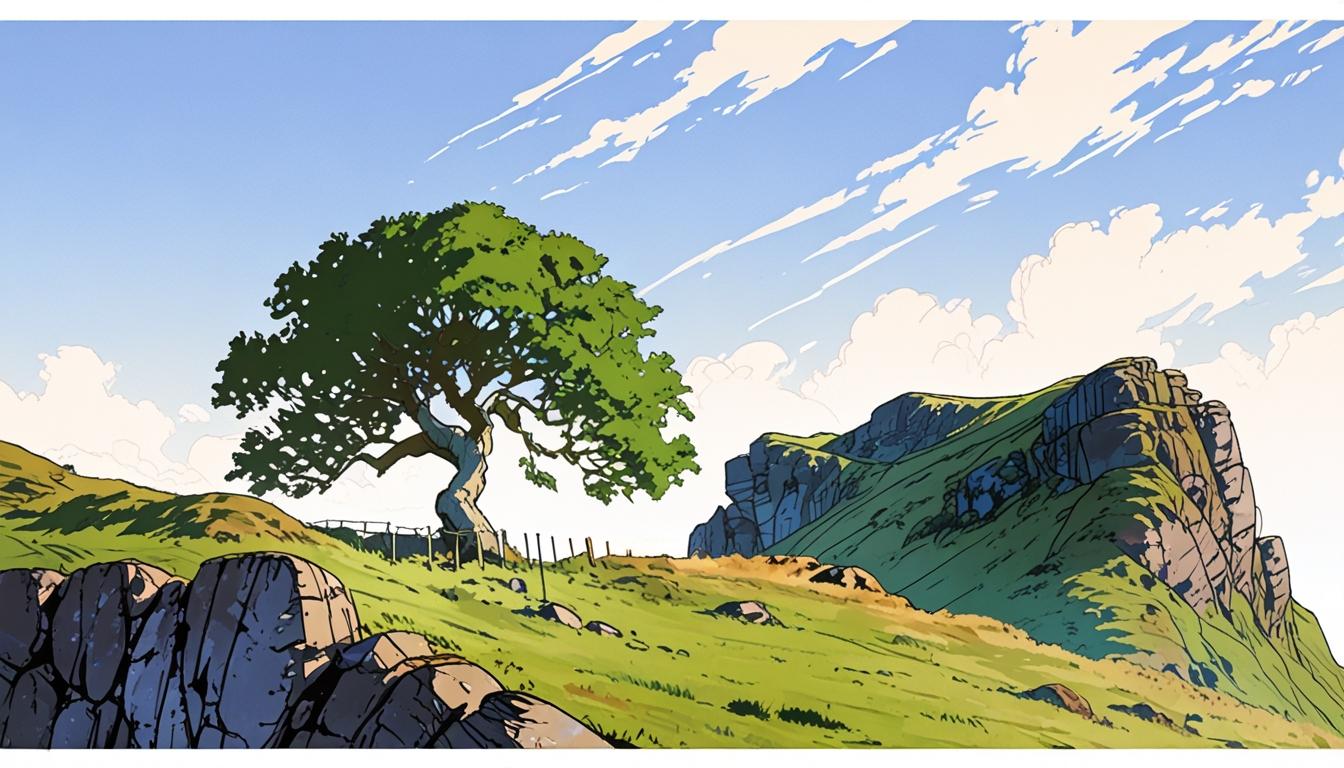In an extraordinary case that has captured national attention, two men have been found guilty of felling the beloved Sycamore Gap tree in Northumberland National Park, a crime that many are describing as a senseless act of destruction. The tree, iconic for its silhouette alongside Hadrian's Wall and featured in the film Robin Hood: Prince of Thieves, stood as a symbol of natural beauty and historical significance. The court’s decision, delivered at Newcastle Crown Court, marks a sobering reflection on how a rooted piece of history can evoke such deep collective sorrow.
Daniel Graham, 39, and Adam Carruthers, 32, were sentenced for their involvement in the tree’s demise, which occurred on the night of September 28, 2023. The trial unveiled a web of conflicting narratives and dubious alibis, as both men denied culpability despite significant evidence presented by the prosecution. Central to the case was a video recording found on Graham's phone, which showed the act of felling, alongside GPS data that tracked their movements to the area in the hours leading up to the crime.
The jury deliberated for roughly five hours before reaching a conviction on two counts of criminal damage: to the tree itself, valued at approximately £620,000, and to Hadrian’s Wall, which sustained an estimated £1,100 in damage when the tree fell. Reports noted that experts and officials, including those from the Forestry Commission and Historic England, expressed profound sorrow over the loss, highlighting its significance as a cherished landmark. These sentiments were echoed by members of the public, who mourned the tree as not merely a part of the landscape but as an integral part of their collective memory.
Throughout the proceedings, the courtroom witnessed a remarkable display of emotional detachment from the defendants. While they were once close friends, Graham and Carruthers sat apart, avoiding eye contact throughout the trial. During cross-examination, they offered inconsistent testimonies that failed to persuade the jury. Carruthers, a mechanic with experience in chainsaws, contradicted himself over his knowledge of the tools and his whereabouts on the night in question. Prosecution counsel Richard Wright KC aptly summarised the absurdity and disconnection of their defences, questioning, “Does this sound like the truth or manufactured, arrant nonsense?”
As the trial unfolded, it became increasingly evident that their motivations for such a drastic act remained shrouded in ambiguity. Prosecutors suggested the act was carried out for amusement, an assertion that has sparked outrage from environmentalists and community leaders alike. The tree was not just any tree; it was a location where life events unfolded—a backdrop for marriage proposals and memorials, further deepening its significance in the public consciousness.
The Sycamore Gap tree's destruction has ignited discussions about conservation and the valuation of nature within a society that often prioritises economic gain over ecological integrity. Experts note that trees like the Sycamore Gap are vital to biodiversity, serving as habitats and fostering ecosystems that would be irrevocably altered by such acts of vandalism. The public's response reflects a growing recognition of the cultural and emotional capital embedded in natural landmarks, highlighting the need to protect these historical vestiges from mindless acts of destruction.
The aftermath of the trial also raises poignant questions about justice and society’s values. While Graham and Carruthers now face potential sentences of up to ten years, there is an ongoing debate about whether such a high-profile prosecution for the felling of a tree is a worthy use of public funds. Critics point out that the economic implications of their trial, estimated at around £20,000 per day for the court proceedings alone, might seem excessive compared to the crime of harming a non-human entity.
As preparations for sentencing on July 15 continue, the case remains a grim reminder of the complexity of human interactions with nature, the indifference towards the environment, and a stark look at what drives individuals to commit irreversible acts. While the men have been punished, the true impact of their actions reverberates through society, challenging us to reconsider our relationship with the natural world and the legacies we leave behind.
In time, perhaps the Sycamore Gap tree will bear witness to regrowth, serving as a symbol of resilience even amidst loss. It stands to reason that, as society contemplates this incident, we must strive to cultivate a deeper respect for our environment, ensuring that future generations will have their own enduring memories intertwined with the stories of our shared natural heritage.
Reference Map
- Paragraph 1, 3, 6, 7, 9, 10
- Paragraph 2, 4, 5, 6
- Paragraph 3, 4, 5, 8, 10
- Paragraph 2, 3
- Paragraph 2, 3
- Paragraph 1, 2, 4, 5, 10
- Paragraph 5, 6
Source: Noah Wire Services
